Amalfi Coast: Why is it a UNESCO World Heritage Site?
Amalfi Coast is one of the most famous coasts in the world. A beautiful stretch of coastline in the province of Salerno, overlooking the two gulfs, Gulf of Naples and Gulf of Salerno. Not so far by Sorrento Coast, another popular sea-tourism destination in Campania and Italy.
Sun, towns which sit high up overlooking the sea, delicious food and cultural and historic heritage unique in the world. Here, nature and history mix each other and give rise to a combination as unique as precious.
For these reasons, in 1997, UNESCO has included this stretch of coast in its List of World Heritage Sites. "Amalfi Coast is an example of the Mediterranean landscape of great cultural and scenic value resulting from its topography and historical evolution".
Its variety and beauty leave its visitors astonished and so eager to get to know better its villages. Its marvellous landscape acquires even greater value thanks to its fragrances and colours: from the sea's emerald blue to the scent of lemons and brooms that grow upon its trees and rocks.
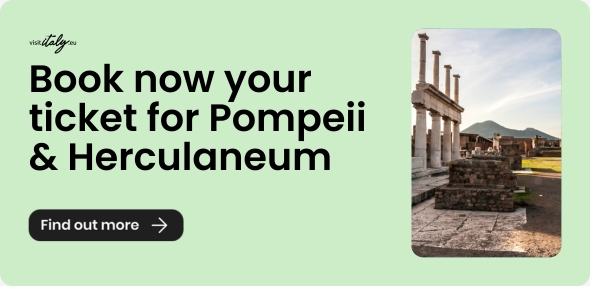
Amalfi Coast's History: the past of a Maritime Republic
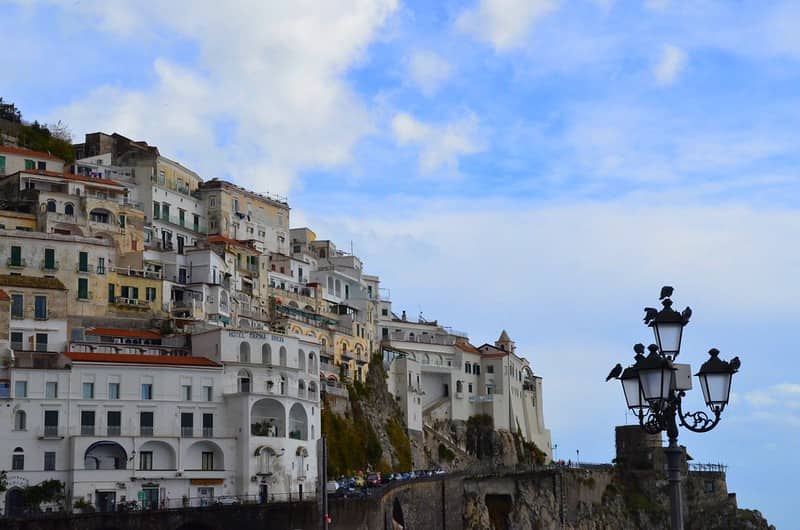
In the beginning, Amalfi Coast was a poor place because of its geographic location. It was an area well protected by the mountains and with the only outlet to the sea. With the advent of its first trade and the making of terracing used to cultivate, its population started to increase and being the area more relevant.
In the 4th century AC there was the Amalfi foundation. It was contended among Byzantium, Benevento's Longobard and Naples' Duke. Amalfi developed till to become the independent Maritim Republic in 839.
Amalfi will play an important role, particularly in maritime traffic. Indeed, it will be the first among the Maritim Republics to have contacts contemporary with Spain, Egipt, Assyrian-Palestinian Coast, Bisanzio Empire and the Romanesque-Germanic West. It was the first one to import paper and spice in Europe.
Amalfi: Evidence of Glorious Cultural and Artistic Past
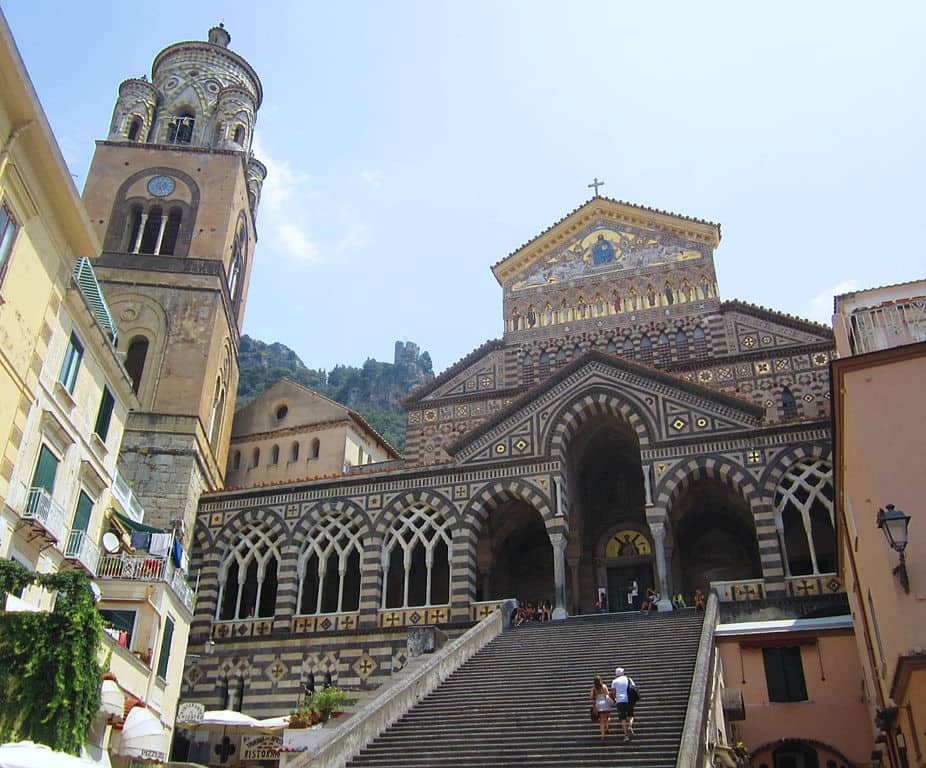
The glorious Maritim Republic of Amalfi has bequeathed historical monuments that have characterized the local art.
One of the most famous monuments in Amalfi is the Cathedral of St. Andrea. It arises on the top of a steep staircase and overlooking Piazza Del Duomo. In the centre of the square the 18th-century Fontana Del Popolo.
The church results from a complex and stratified building with an earlier Romantic style and a later Islamic-Byzantine style. It has a covered facade by 19th-century polychrome majolica, which makes it similar to Cordoba's Mosque. It is no coincidence because of the many Republic of Amalfi's trade with the Arabic of Spain. Instead, the interior is in Barocco style but remodelled several times.
From the Duomo's inside, you reach the Chiostro Del Paradiso. It is a delicious Arabic-style building, the centre of which a lovely inner garden. This continuous fusion of architectural elements from different people and ethnic groups creates its style: the Amalfi style.
Another architectural heritage of the sea power of Amalfi is the Arsenale. It is a big building with suggestive stone salons with a pointed barrel vault. The left shipyard is about half of what used to be in the Middle Ages.
In the Arsenale, there is Tavole Amalfitane, a code where is collected the sea right that used during the Middle Ages. Here we find also the first compass that appeared in Europe, improved by the Amalfitan Flavio Gioia.
Ravello: the music city
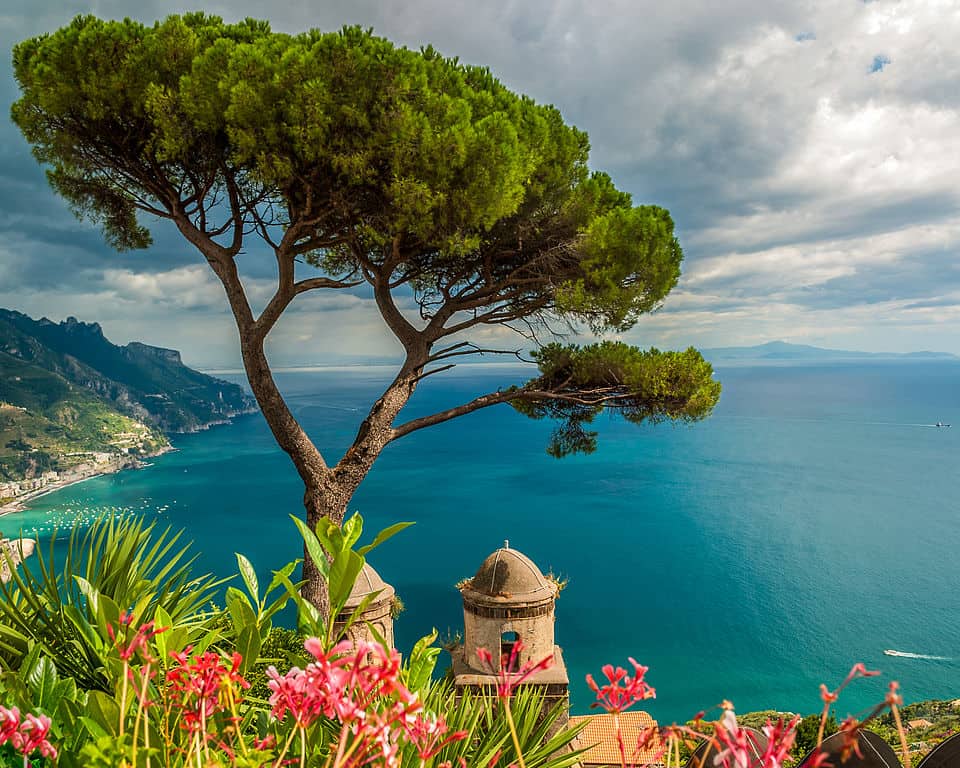
Ravello is an enchanted village composed of alleys, gardens and historic villas. Known as the City of the Music: every year there is a prestigious international music festival that made it famous throughout the world.
Piazza del Vescovato is the heart of Ravello. In the square, there is the Duomo, full of precious artworks, and the entry tower of the beautiful Villa Rufolo.
The villa was built in the 5th century and was a property of the powerful Rufolo family till the 19th century when they had to sell it to the Scottish Francis Nevile Reid.
Garden of Klingsor is the garden that surrounds Villa Rufolo. It was beloved by the German musician Richard Wagner.
Positano: V.I.P. Holidays
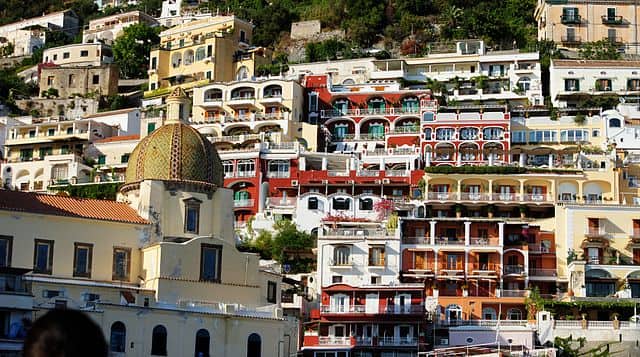
Positano, with its white houses, that sloping down to the sea, is a pleasant place.
Since the post-war, with the arrival of celebrities from Hollywood, it has become a famous luxury holiday place. The discovery of ancient Roman Villas attested to a "leisure" and Otium conception already at that time.
Positano is also a fashion destination because of its Positano's beachwear fashion. Its small streets are full of tailored workshops.
But Positano is especially famous for its beaches. The most picturesque is Arienzo, reachable from the town by 300 steps.
Vietri sul Mare and its Art of Majolica
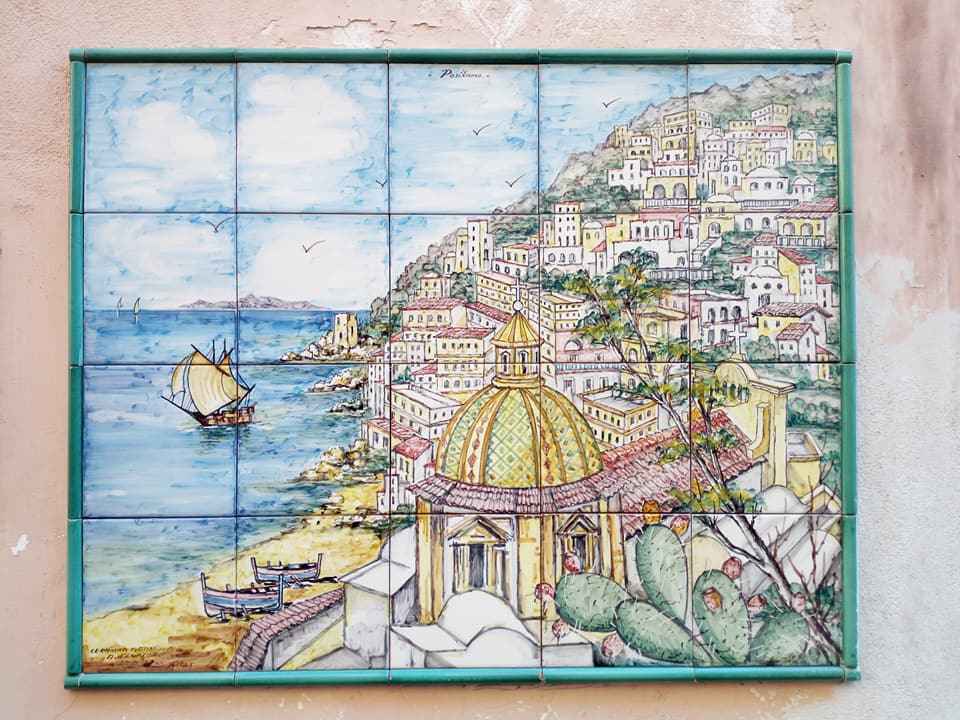
Vietri Sul Mare is a characteristic and colourful village. Its coloured buildings get confused with the beauty of the natural landscape. Clinging houses to limestone ramparts falling over the sea that make Vietri a wonderful country.
Vietri Sul Mare is particularly famous for its art of ceramics, the typical majolica. In every corner of the little town, there are many small artisanal factories. They enrich with colours a landscape already beautiful itself. The majolica decors the domes of the most important churches of the Amalfi Coast.
Amalfi Coast is a dreamy place that doesn't seem real.
About the author
Written on 05/07/2021


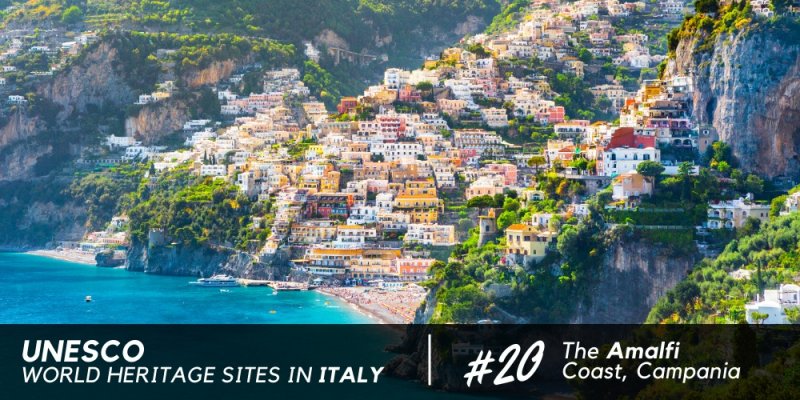

Elisa Borgato
How would you describe Amalfi Coast? A place made by bays, inlets, cliffs along the shore with small sandy corners. The variety and beauty of this peninsular stretch in Campania, made of 16 villages: Amalfi, Atrani, Cava de' Tirreni, Cetara, Conca dei Marini, Furore, Maiori, Minori, Positano, Praiano, Raito, Ravello, Sant'Egidio del Monte Albino, Scala, Tramonti, Vietri sul Mare.